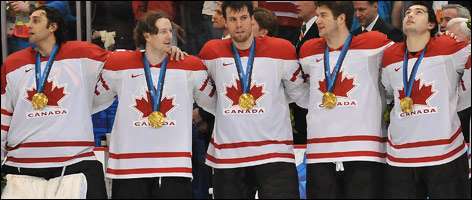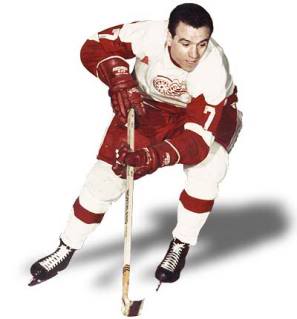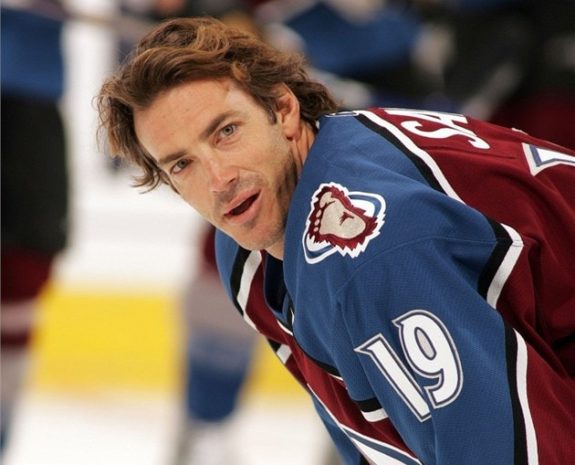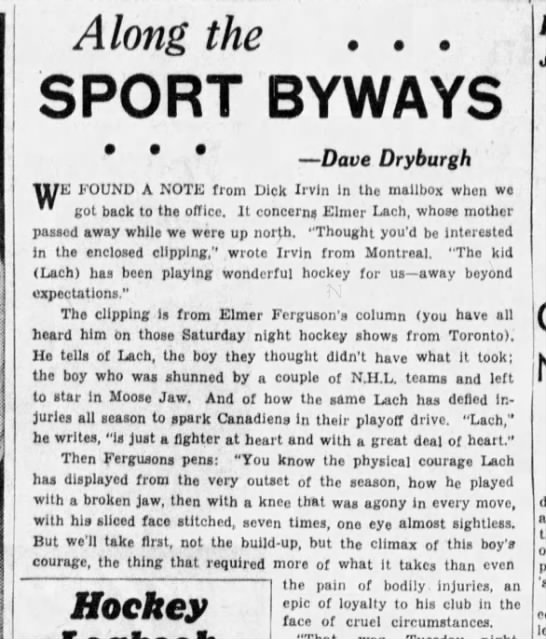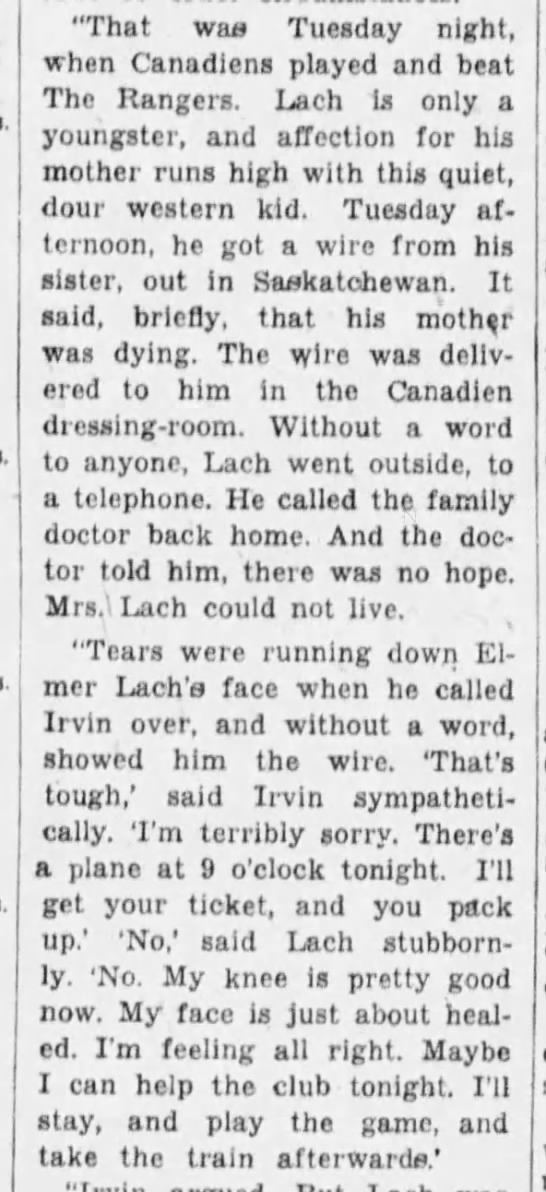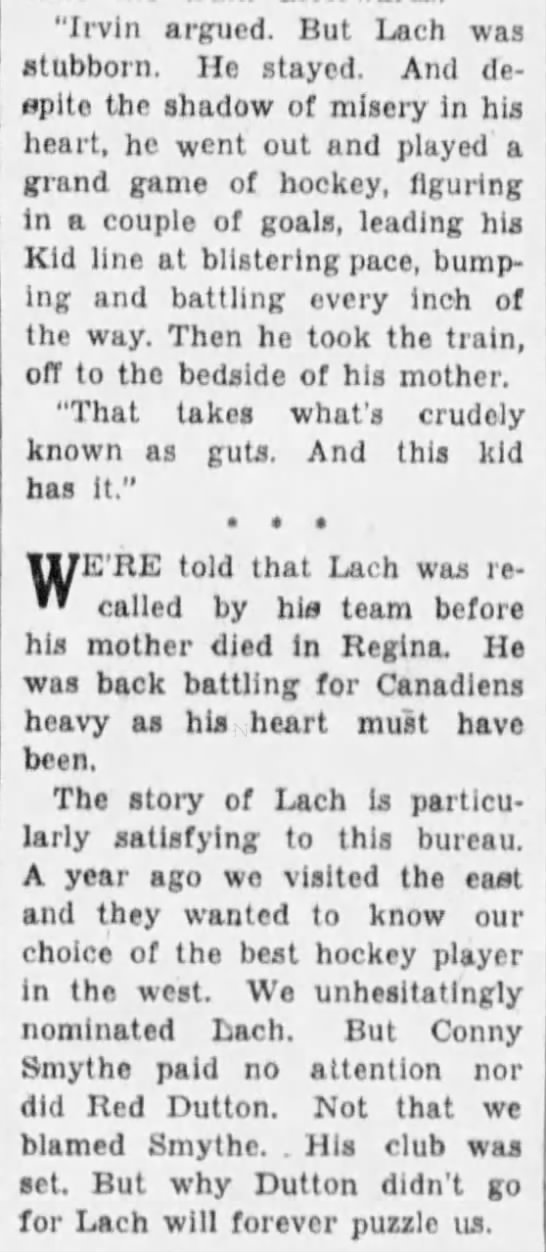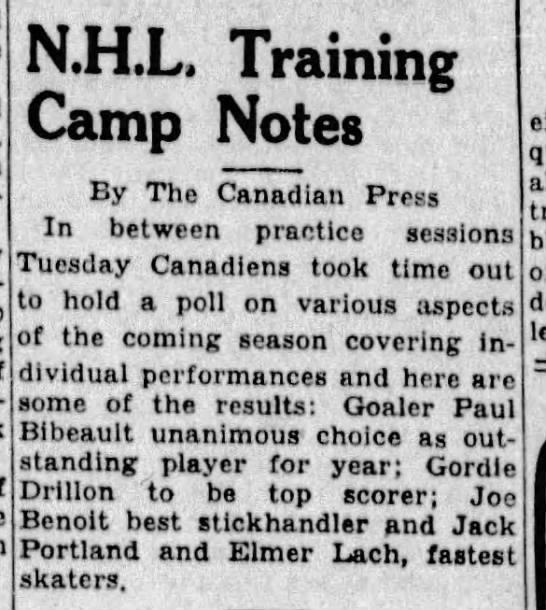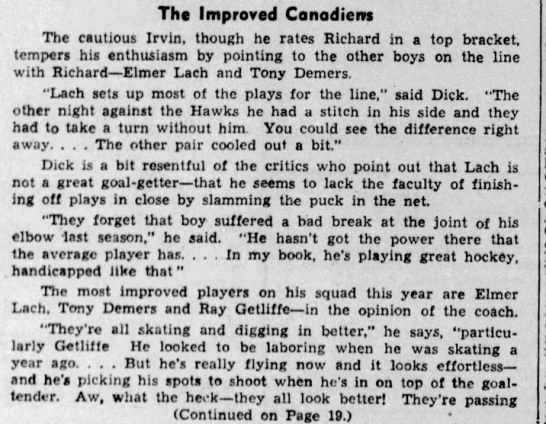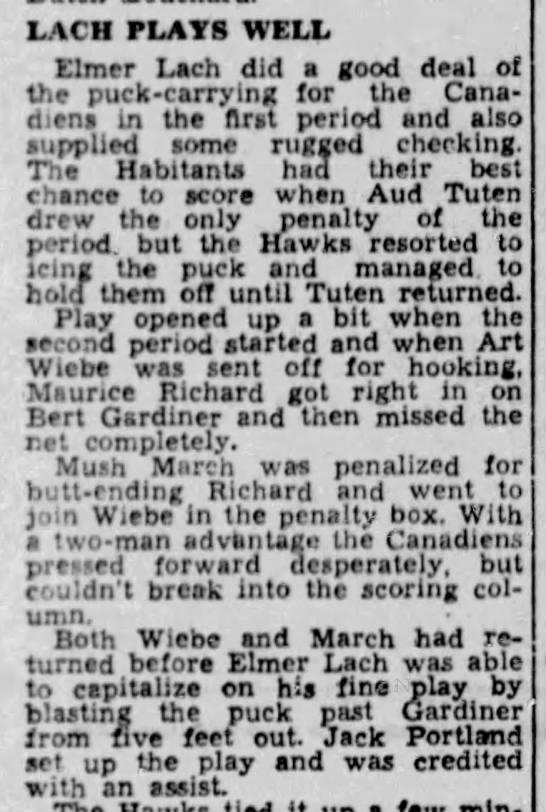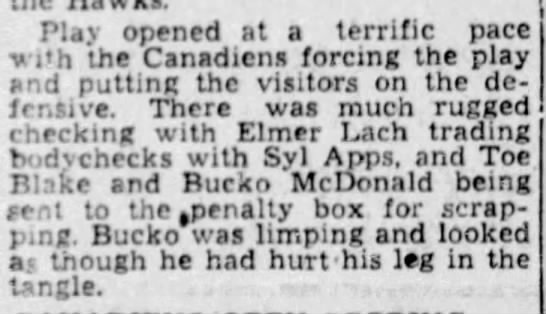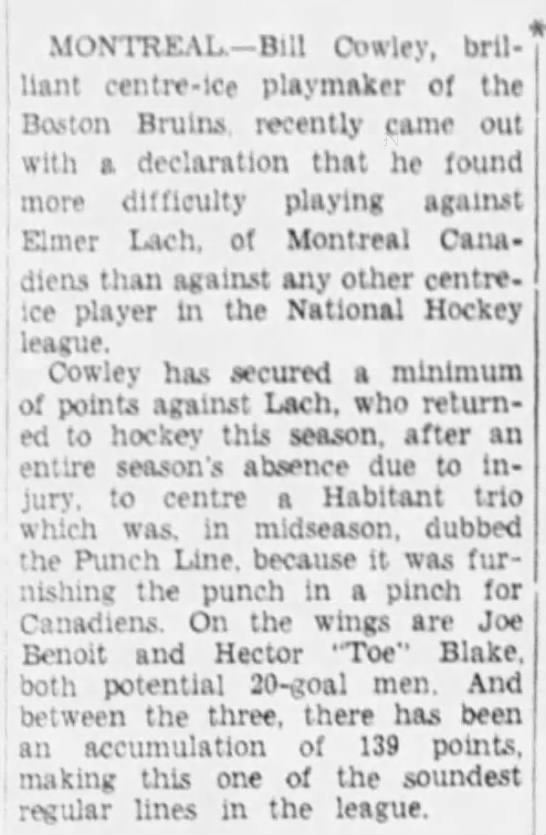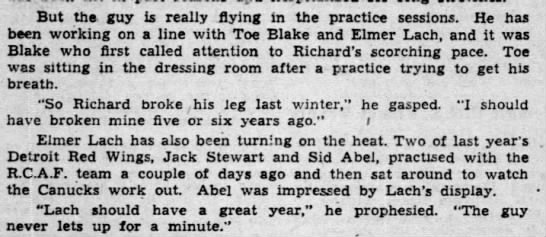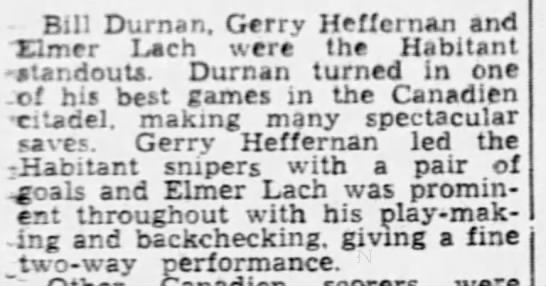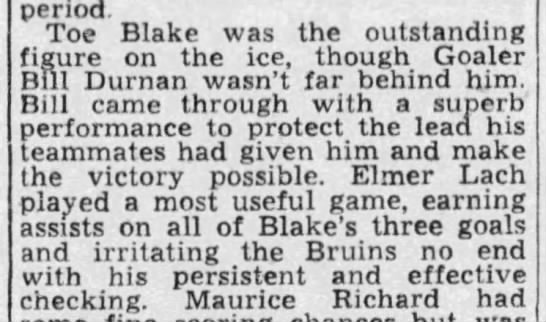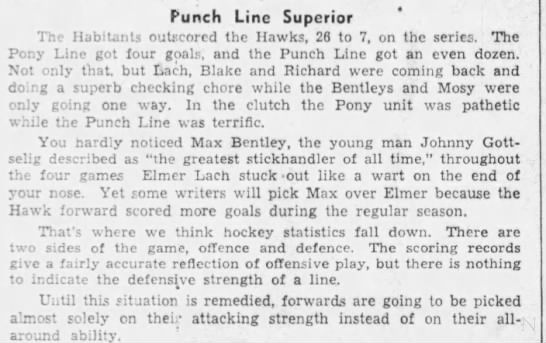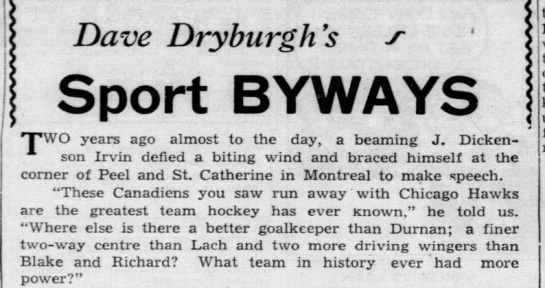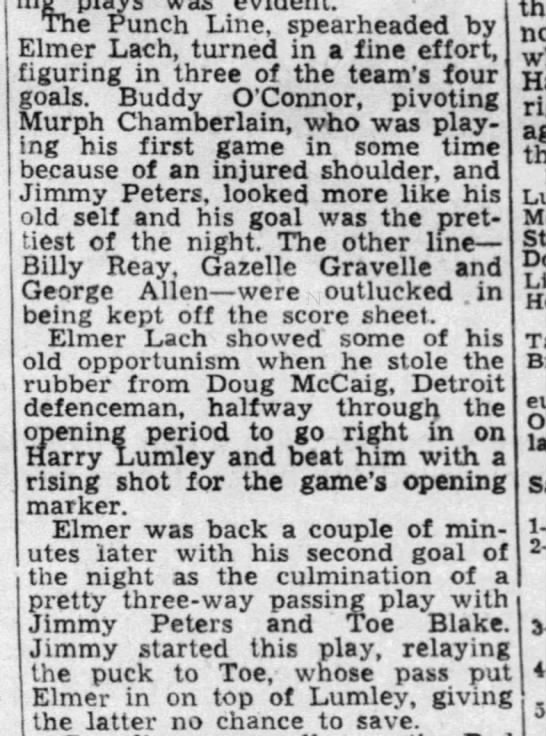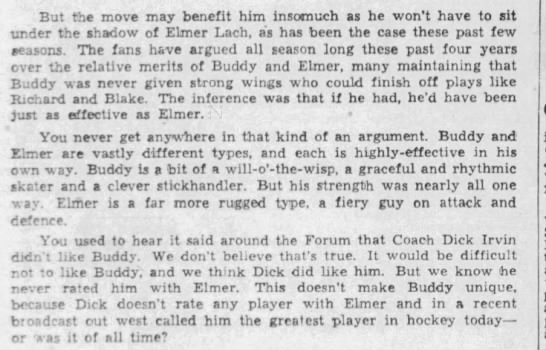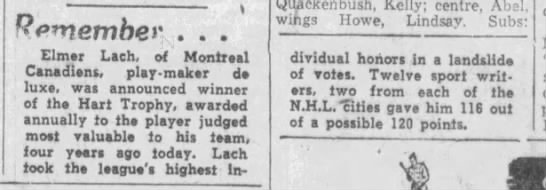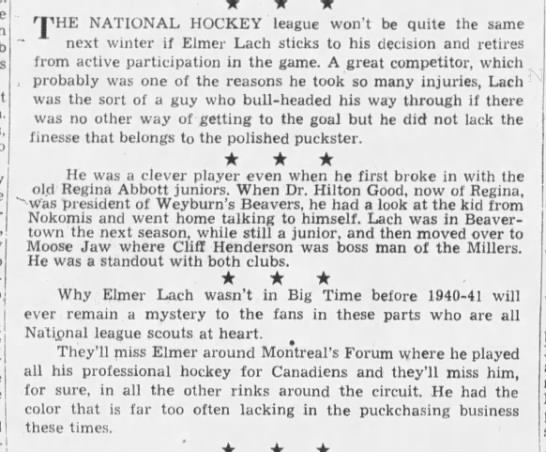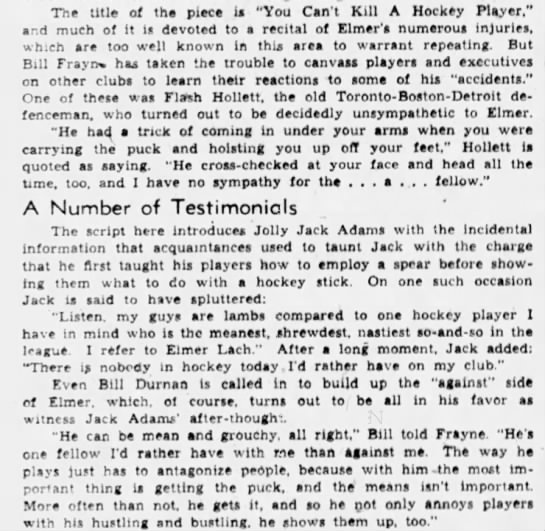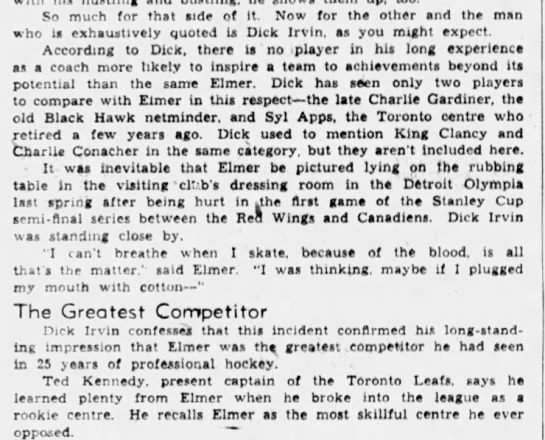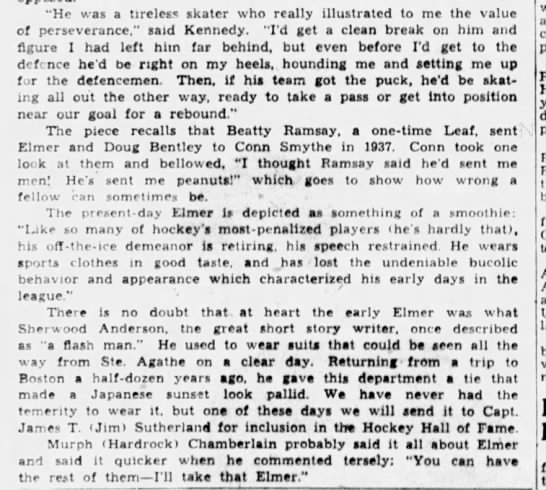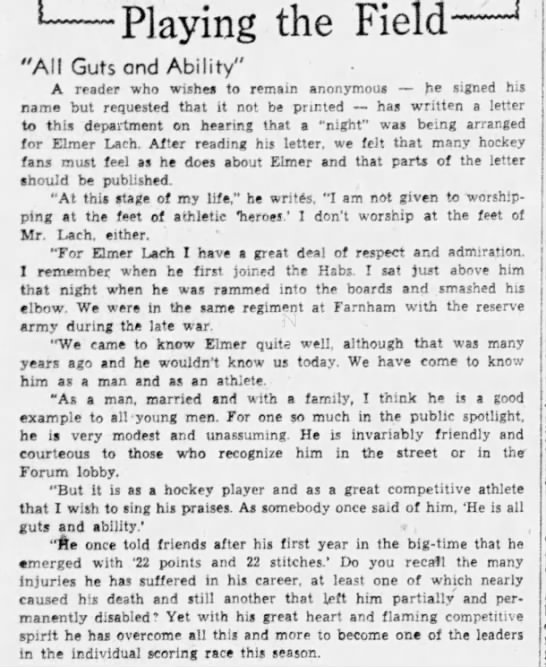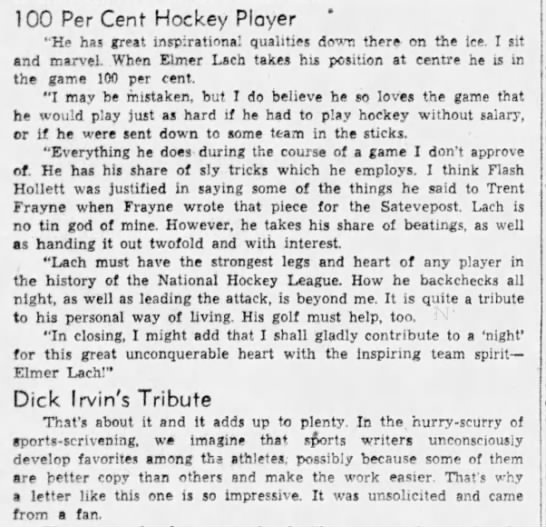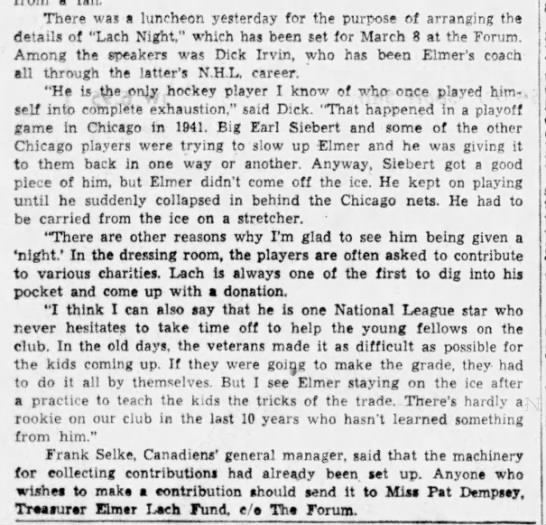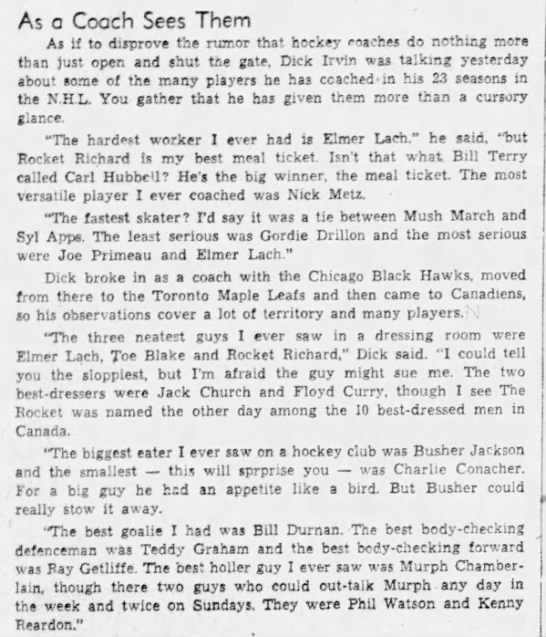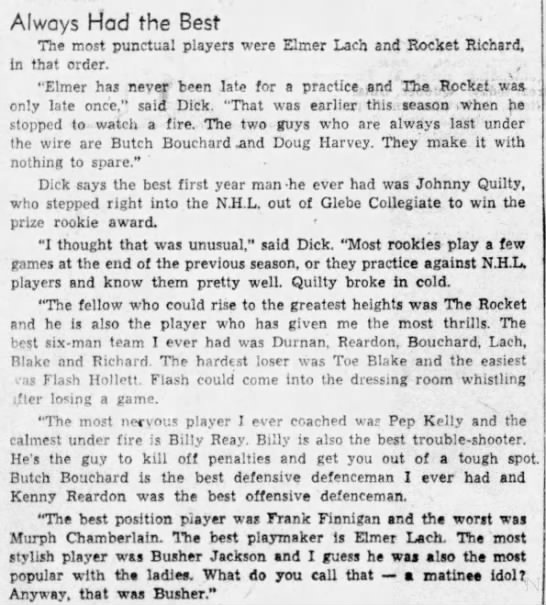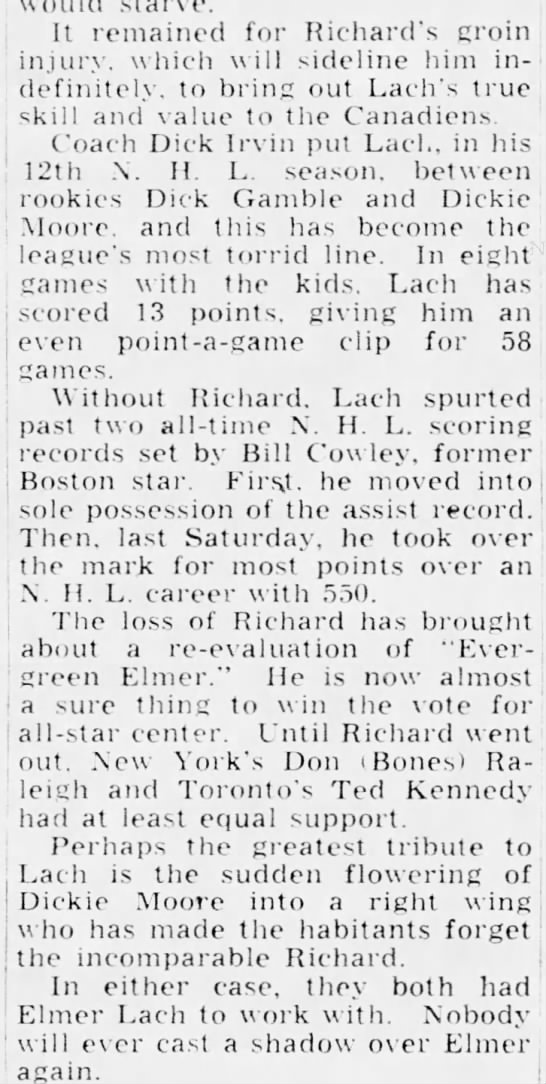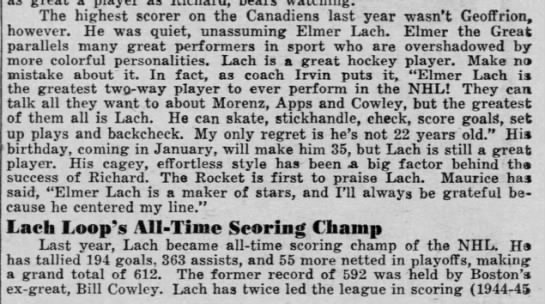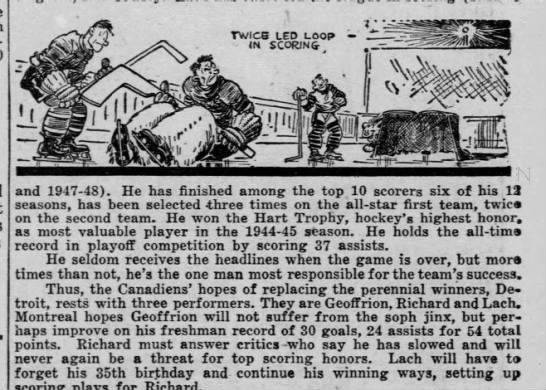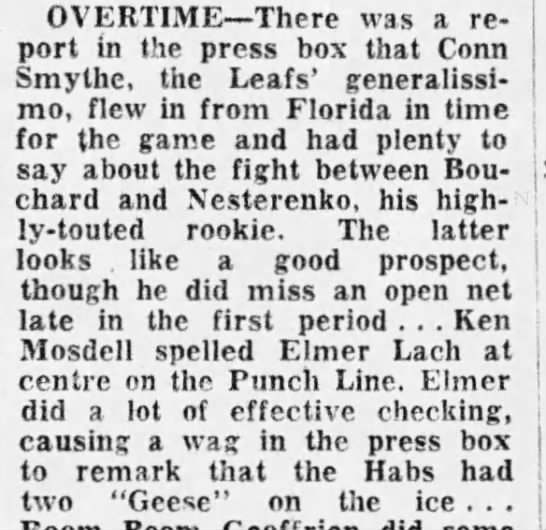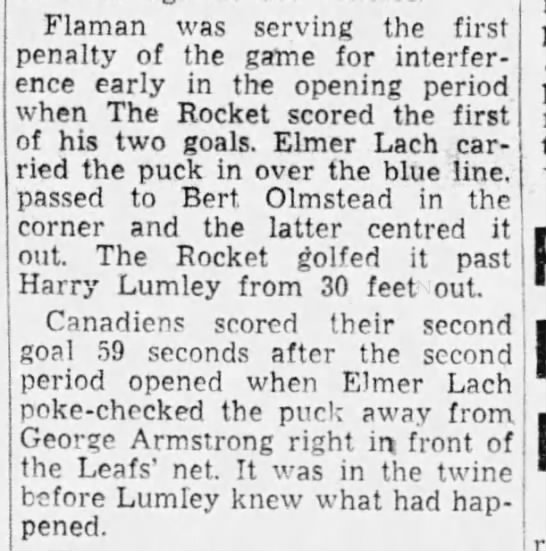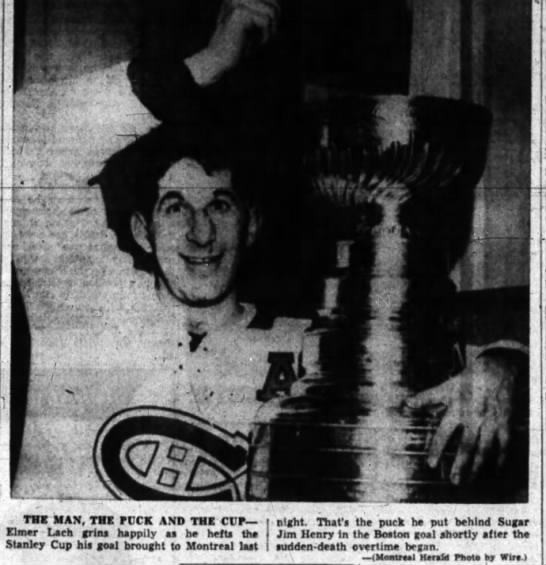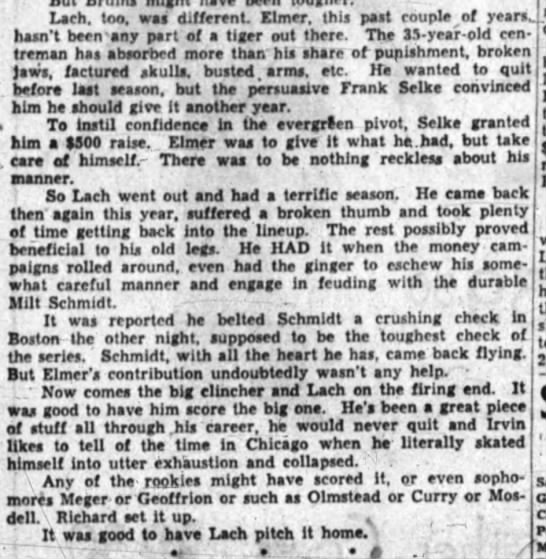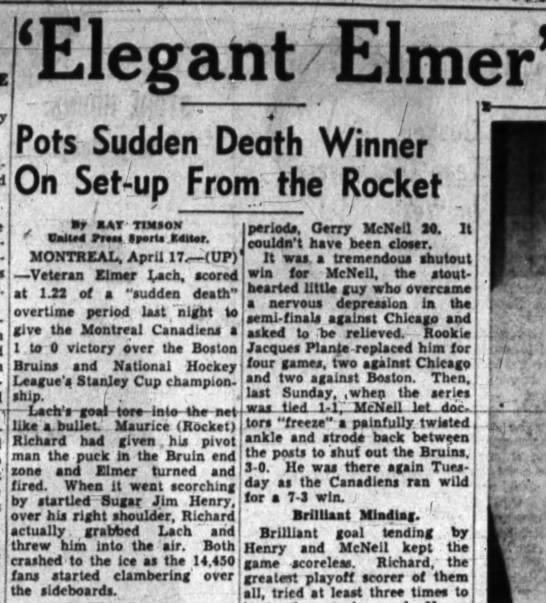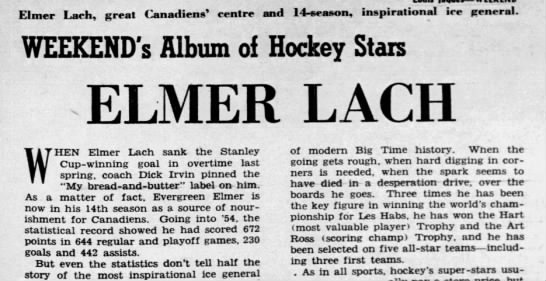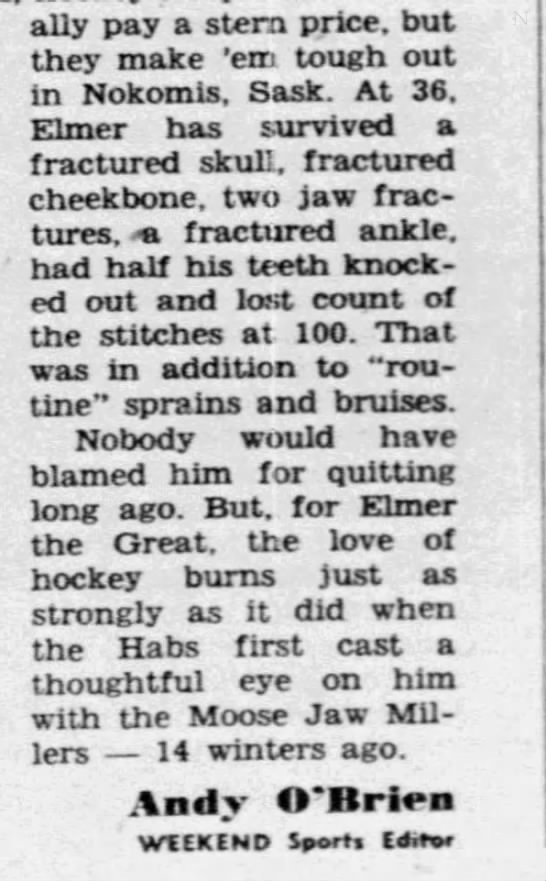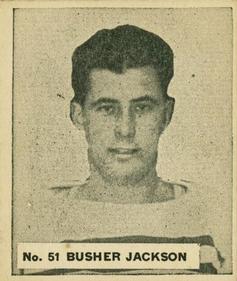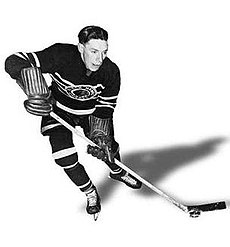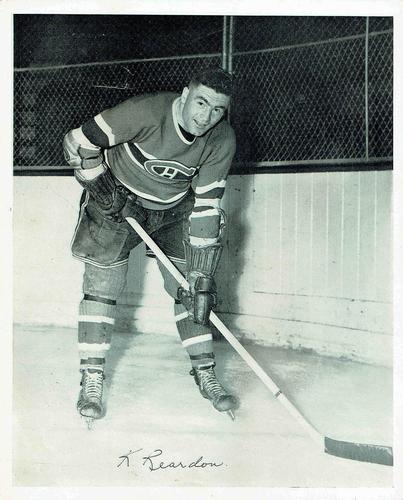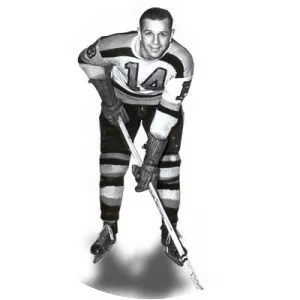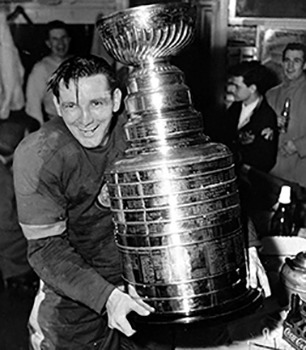ACHIEVEMENTS
Stanley Cup Champion (1903, 1907)
Stanley Cup Finalist (1904, 1905, 1909)
Stanley Cup Challenge leading scorer (1905, 1907)
Led his own team in Cup Scoring (1904, 1905, 1907)
MHL Pro 1st All-Star Team (1907)
ECAHA 1st All-Star Team (1908)
Top-3 his league in goals/points (1904, 1905, 1906, 1907, 1908)
Selected to The Hockey News’ pre-NHL First All-Star Team.
“Best All-Around Player” of 1900-1909 (Ultimate Hockey)
“Best Defensive Forward” of 1900-1909 (Ultimate Hockey)
Charter Member of the HHOF (1945 Class)
Quotes about Style of Play
Legends of Hockey said:
Phillips showed himself to be a speed merchant on the blades and had no peer as a backchecker.
Total Hockey said:
He could skate, shoot, and stickhandle, and was considered the best backchecker in the game.
Ultimate Hockey said:
Virtually overnight, Phillips was the talk of the hockey world. Stories were told of a speed demon from out west, a hockeyist “game” to the core. This man had a vast repertoire of skills, each of them polished to a glimmer. He controlled the puck exceptionally well, possessed a deadly shot, and had a knack for defensive pursuits, most notably the backcheck… Phillips had a devastating shot. His blasts were often referred to as “cross fires”. At a tme when hockey fans argued on behalf of the Russell Bowies, Frank McGees, and Hod Stuarts as hockey’s top player, “Nibs” was easily the all-around pick of the litter.
Honoured Members said:
He showed great skating ability and had a backhand of unequalled speed and accuracy.
The Ultimate A-Z guide of Everyone Who Has Ever played in the NHL said:
In many ways, he was, in the modern vernacular, a complete player. He had great speed and a terrific shot, and he was a backchecker without compare.
Hockey Hall of Fame said:
He had everything a good player should have: whirlwind speed, a bullet-like shot, stickhandling wizardry, and was regarded as being without peer as a backchecker.
Geocities said:
He soon showed superior talent in puckhandling and on-ice decision making that made him an unpredictable force to be reckoned with. Tommy could play both Left Wing and Right Wing, and had an unusually powerful shot to go along with pinpoint accuracy. His backchecking skills were exceptional as well. As the obvious superior in natural talent, he became the leader of a special group of close knit players that would be destined for hockey greatness.
Small Town Glory said:
Phillips earned praise for his “amazing” rushes and his “bullet” shots.
Small Town Glory said:
A great stickhandler and natural leader… (after leaving Thistles,) remained a feared goalscorer. He became a highly paid ringer, often brought in to help a team with the Stanley Cup. He went on to play for Ottawa, Nelson, Edmonton, and Vancouver.
Lester Patrick said:
My opinion is based on consistency of players over a period of years, and the fact that men selected possessed nearly all the fundamentals of an ideal player - physique, stamina, courage, speed, stick-handling, goal-getting ability, skill in passing, proper temperament and, above all, hockey brains.
Patrick selected Hugh Lehman in goal, Sprague Cleghorn and Hod Stuart on defence, and up front he chose Tom Phillips, Arthur Farrell and Fred "Cyclone" Taylor.
The Best/Most Complete Player of his Time?
Total Hockey said:
…was generally regarded as the best player in hockey…
The Montreal Herald said:
Who is the best hockey player in Canada? Nine out of ten people will tell you it is either Frank McGee or him. He is the speedier, but he has nothing on McGee in the matter of stickhandling and has not the same generalship. Where each shines is in pulling doubtful games out of the fires of uncertainty.
Hockey Hall of Fame said:
Hockey Oldtimers who could recall the game as it was played in the early 1900s agreed that he was perhaps the greatest hockey player they had ever seen…
Honoured Members said:
Out west, he was often called the greatest player in the game, much like Frank McGee in the East.
The Trail of the Stanley Cup said:
…during the season, the “Little Men Of Iron” withstood a challenge from Winnipeg and were greatly assisted by a newcomer, Tom Phillips. He was the star on a line with **** ******* and ***** ******* (two HHOFers)… he finally made it on a cup winner when Kenora lifted the from Wanderers in a midseason series at Montreal in which Phillips, playing on a line with ***** ******** and **** *******, was the star, At this time he was acclaimed as the greatest left winger in the game… He had the misfortune to break an ankle in the first game (in 1909) which may have permanently handicapped him. Three years later he signed with Vancouver… he played well but was not the standout of previous years and retired…
Tom Phillips played in six Stanley Cup series and stands up well in the scorers for playoff games. He was undoubtedly a great player who was compared favouably with Frank McGee…
The Trail of the Stanley Cup said:
Passing through Ottawa en route to Renfrew (in 1909), Lester Patrick gave an interview to the press. He stated that he considered Tom Phillips the best player in the game.
Art Ross said:
The Greatest Hockey player I have ever seen.
THN's Century of Hockey said:
Here are the best of the pre-and non-NHLers.
THN’s First Team:
G: Hugh Lehman
D: Hod Stuart
D: Lester Patrick
R: Cyclone Taylor
LW: Tommy Phillips
C: Frank McGee
RW: Didier Pitre
Putting a Roof on Winter said:
Fans used to chant, “Never a man like Phillips, never another like he.”
Season-by-Season Breakdown
1901: Rat Portage. No stats available. Phillips, at 13, had led the junior Thistles to a victory over the Senior team five years prior, and by now those juniors had taken over the team.
Small Town Glory said:
In the winter of 1901, Thistles fans packed the stands at home games. They often took the train to root for the team at away games…Tommy Phillips played a perfect cover-point. He not only defended the goal well, he was an offensive spark, scoring often. When Phillips rushed the puck up the ice, chances were always good he would send it into the net.
1902: Rat Portage. No stats available. The Thistles were longing to be accepted into the senior loop but the elitist circuit wouldn’t have it. The Thistles crushed all comers and used a challenge to the Champion as a hopeful springboard to the top league.
Small Town Glory said:
The Winnipeg Senior Victorias were the current Stanley Cup champions… surprisingly, they agreed to play an exhibition game…the Vics’ forward line couldn’t get through the heavy checking of Phillips, ********, and ******. At the other end of the ice, however, the Vics also played outstanding defense. The Vics found some openings in the second half and opened up a 3 to 0 difference…The Thistles kept their opponents at bay the rest of the way, but that was all they could do. The match ended with the Winnipeg Victorias on top, 3 to 1.
Rat Portage was horrified to learn that captain Tommy Phillips was leaving his hometown to join the Montreal AAA… Phillips’ exit left Rat Portage wondering what would become of their team.
1903: CAHL, MAAA, 4-6-X-6-X, only played half the games, was 5th in GPG behind three HHOFers including Frank McGee. Part of successful cup defense with MAAA. (4-3-0-3). 7th in Cup Series goals, 3rd on Montreal behind two HHOFers. Cup reverted to CAHL regular season champions Ottawa, who defended the cup again in March, against Victorias & Rat Portage.
The Trail of the Stanley Cup said:
(game 2)Perfect ice conditions prevailed and an exceptionally fast game was played. Montreal got away to a lead on goals by Phillips and ******…
(game 3) Phillips and ******* were best for Montreal.
(game 4) The final game was a well-earned triumph for the Wheelers who, led by Phillips and ******, carried the play throughout. The final score was 4-1 which represented the margin of play.
1904:SOHA, Toronto, 4-5-X-5-21, 2nd in goals/points. 1st in playoff scoring with 2-6-6-12-9. Challenged Ottawa for cup. Team was badly outmatched and outscored 17-4 over two games. One record has Phillips scoring 2 of those 4 goals; another has him with a goal and two assists.
The Trail of the Stanley Cup said:
(game 1) The Marlboros got off to a good start on goals by Tom Phillips… and had Ottawa on the run for the first part of the game. Phillips was a veritable whirlwind on skates and corkscrewed through the Senators in beautiful dashes.
(game 2) The second game saw the Toronto boys completely outclassed. Tom Phillips and ****** were the only men who rated with the fast skating Ottawas.
1905: MHL, Rat Portage, 8-26-6-32-12. 2nd in goals, behind a HHOFer who had 28. 1st in assists – no one else had more than 3 – and 1st in points. Challenged Ottawa for the Stanley Cup. 3-8-0-8-X in a tough three-game series marred by Ottawa cheating by damaging the ice to counter Phillips’ speed.
Led Rat Portage in goals with 8. next best, Griffis, had 3. Rat Portage had 15 in total compared to Ottawa’s 12. Top scorers on Ottawa in these three games: Alf Smith 4, Frank McGee 3.
The Trail of the Stanley Cup said:
(game 1) ***** and Pulford were not up to form and Tom Phillips twirled around them for five goals, putting up a marvellous display.
Small Town Glory said:
Tom Phillips put on a show for the fans with the first five-goal performance in a Stanley Cup game by a player other than the high-scoring McGee.
Ottawa Citizen said:
Rat Portage is far and away the fastest and most dangerous team which has ever appeared in Ottawa to challenge for the Stanley Cup.
Toronto Globe said:
The Silver Seven waded into the Thistles in butcher fashion and every player who got near them was jolted good and plenty. McGee several times hat Thistles players over the head with his stick. Griffis and ***** ******** of the Thistles went on the ice fitter for the hospital than for the hockey game. They both had wrenched knees and were still rather weak from the fearful gruelling they took in the previous game. ******** was so done out that he fell down from sheer weakness in a scrimmage in the Thistles’ goal and was unable to get up for a few seconds. When he did rise to his feet, referee Grant ruled him off for five minutes for obstructing the goal. *** ******, cover point for the Thistles, had a nasty knee, too. He injured it early in the game when Harvey Pulford almost heaved him over the boards with a charge from behind. Tommy Phillips had his face cut open in three places, and his eye closed, and he looked as though he had been in a railroad wreck. Griffis had a beautiful countenance, decorated by a swollen nose, split lips, and a gash on the forehead. Captain Phillips complimented the Ottawas on their victory.
Small Town Glory said:
Thankfully, the ice was a little better than it had been for the second game….speedy Phillips got the rebound and slipped the puck into the net….Phillips scored another to put the Thistles on top again, 2-1… One of the reasons the first half went so well was that the Thistles had been playing with familiar rules. There was a judge of play and a referee. The second half was played under eastern rules – a referee and no judge. The referee from the east seemed to favour the Silver Seven. The Thistles found themselves in the box often. Even the Ottawa paper noted the teams were being treated differently. “The Thistles may have played a more spirited game, but when the referee will send a man to the fence for not getting up quicker after being knocked down, it would seem that he is hardly fair.”… With the referee turning a blind eye, the Ottawa team started slashing with their sticks. Soon the faces of three Rat Portage forwards were bleeding… Despite their injuries, the Thistles pushed on. They scored a third goal while playing five men to seven... Ottawa tied it up and went ahead…Then Tommy Phillips took control with one of his great rushes. He scored his third goal to tie the score at four. McGee drives the puck into the net… Ottawa 5, Rat Portage 4… The thistles congratulated their opponents. They stood tall, but shook their heads at how the cards had been stacked against them.
The Trail of the Stanley Cup said:
(game 3) Phillips and McGee were the stars, both scoring three goals… when Phillips scored his third goal it tied the score at 4-4 and the (Ottawa) crowd was yelling to salt the ice or flood it.
Geocities said:
Phillips scored three of the six Rat Portage goals in the final two games, but the watery ice of Ottawa's Arena Rink severely hampered his skating and shooting abilities. Many eastern hockeyists openly questioned the outcome of the series, with a good share of them proclaiming Phillips as the best player, not only of the west, but in all of organized hockey.
1906: MHL, Kenora, 9-23-5-28-24. 2nd in goals, leader had 26. 1st in assists. 2nd in points, leader had 29. Not part of a cup challenge this year.
1907: MHL, Kenora, 6-18-X-18-21. 1st in goals/points. Next best was HHOFer Joe Hall as a forward with 14 in 9 games. Kenora scored 38 goals in total. Hall’s Brandon team scored 50. 1st All-Star Team. 2-4-X-4-9 in MHL playoffs. Edged by one goal by Hall and another HHOFer. Won the cup from the Wanderers in a two-game total goals series, 12-8. Lost the cup two months later to the same Wanderers by the same score. Ignoring the two Wanderers games where they beat up on New Glasgow 17-5 over two games,
the scoring leaders of the four serious cup final games are as follows: Phillips 9, HHOFer 9, Moose Johnson 6, Lester Patrick 4.
The Trail of the Stanley Cup said:
(game 1) The Thistles proceeded to skate the powerful Redbands into the ice. Led by Tom Phillips, rated as the greatest left winger in the game, they skated circles around the easterners. The halftime score stood at two all, Tom Phillips and ***** ******* netting a pair each. The second half saw Phillips at his best when he scored two more goals and the game ended with the Wanderers fading badly.
Small Town Glory said:
Less than four minutes in, Phillips landed the puck in the Thistles’ own end. He gained speed down ice on one of his famous rushes. He slammed the rubber disc behind **** and into the Wanderers’ net… *** ***** rammed into Phillips, knocking him off his feet. Then, an offside call had Phillips throwing up his hands in disgust. Finally, he injured his foot and the game had to be stopped… but none of that could halt Tommy Phillips. On the very next rush, he picked up the puck after a save by ******. Appearing like a flash in front of the net, he slapped the puck past ****.
The Trail of the Stanley Cup said:
(game 2) Phillips, ***** and **** were the stars for Kenora…
Small Town Glory said:
[v]Captain Tommy Phillips shouted last-minute instructions… At the faceoff after the Wanderers goal, Phillips won the puck. [/b]******** picked it up and seconds later flicked it into the net. In short order another three Thistles goals were scored, Phillips netting two and assisting on the other. The young hockey wonder had never been better…The Thistles began the second half with one more goal. Phillips stole the puck from a Wanderers’ rush and once again sent it to ********, who scored easily…Wanderers awoke from their daze. In less than ten minutes, they netted four goals. 6-6… The three minute break (to fix **** ********’s pants) had given the Thistles the rest they needed… ****** and ****** added two goals. 8-6 Thistles.
Lord Stanley's Cup said:
Arguably the greatest left winger of his era, captain Tom Phillips scored all four goals in the first game, then had a hat trick in the cup clincher…
Small Town Glory said:
If the Thistles lost their next home game against Portage La Prairie, they might not be allowed to defend the cup… The Thistles played like true champions and blanked their opponents 7 to 0. “Captain Phillips displayed the generalship which has made him in hockey circles across Canada”, praised the Kenora newspaper.
1908: ECAHA, Ottawa, 10-26-X-26-40. 3rd in league scoring. Just behind two other HHOF phenoms who, like Phillips, retired before age 30. Tied with Cyclone Taylor for 2nd in PIMs. 1st All-Star Team. Not part of a cup challenge this year.
1909: Did not play in the regular season. Was signed as a high-profile ringer for the controversial Edmonton team that challenged for the cup. Scored one goal in a 7-3 loss. Broke his ankle in this game and did not play the next game. This was the turning point of the game and the series. It is said that he was never the same after this.
1912: 1912: PCHA, Vancouver, 14-17-X-17-30. 7th in league scoring. Behind four HHOFers and ahead of five others. A decent season but not what he was used to.
CAREER SUMMARY
Finished with 121 goals, 11 assists, 132 points and 148 points in 53 recorded games. Had 32 goals and 8 assists for 40 points, with 40 PIMs in 18 recorded playoff games, including 22-2-24 in 12 cup finals matches.
As of the end of the pre-consolidation era, according to The Trail Of the Stanley Cup, here are the scoring leaders for all cup games:
1. Frank McGee - 63
2. Frank Foyston – 37
3. Alf Smith – 36
4. ***** ******* - 31
5. Newsy Lalonde – 27
6. ***** ******** - 26
7. ***** ***** - 25
8. Ernie Johnson - 23
8. Joe Malone - 23
8. ***** ***** - 23
11. Tom Phillips – 22
However, Phillips’ cup games all came against the very best teams. A couple of players at the top of the list padded their stats against some terrible challengers such as Queens University, Brandon, Smiths Falls, Ottawa Vics and Dawson City. Remove those games from the record, leaving only serious games in which there was doubt about the outcome, and you’re left with:
1. Frank Foyston - 27
1. Newsy Lalonde - 27
3. Tom Phillips - 22
4. Frank McGee – 21
5. ***** ******* - 18
6. Alf Smith – 15
7. Joe Malone - 14
8. ***** ***** - 13
9. Ernie Johnson - 11
10. ****** ******** - 9
11. ***** ***** - 4
And that’s not just over Phillips’ career (1902-1912) –
That’s from the start of the Cup until consolidation! (1893-1926)
*Credit to Seventies for the information.







